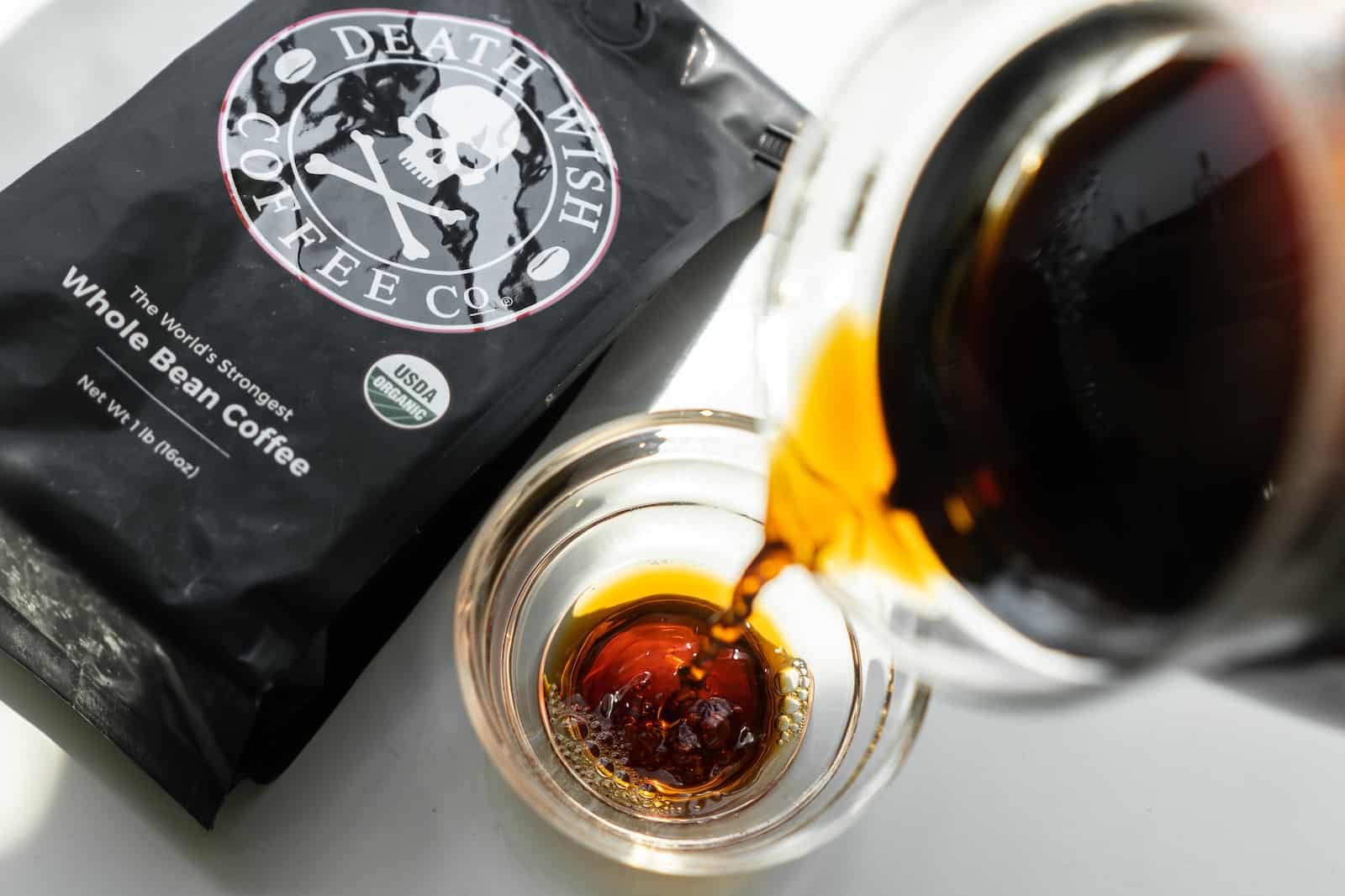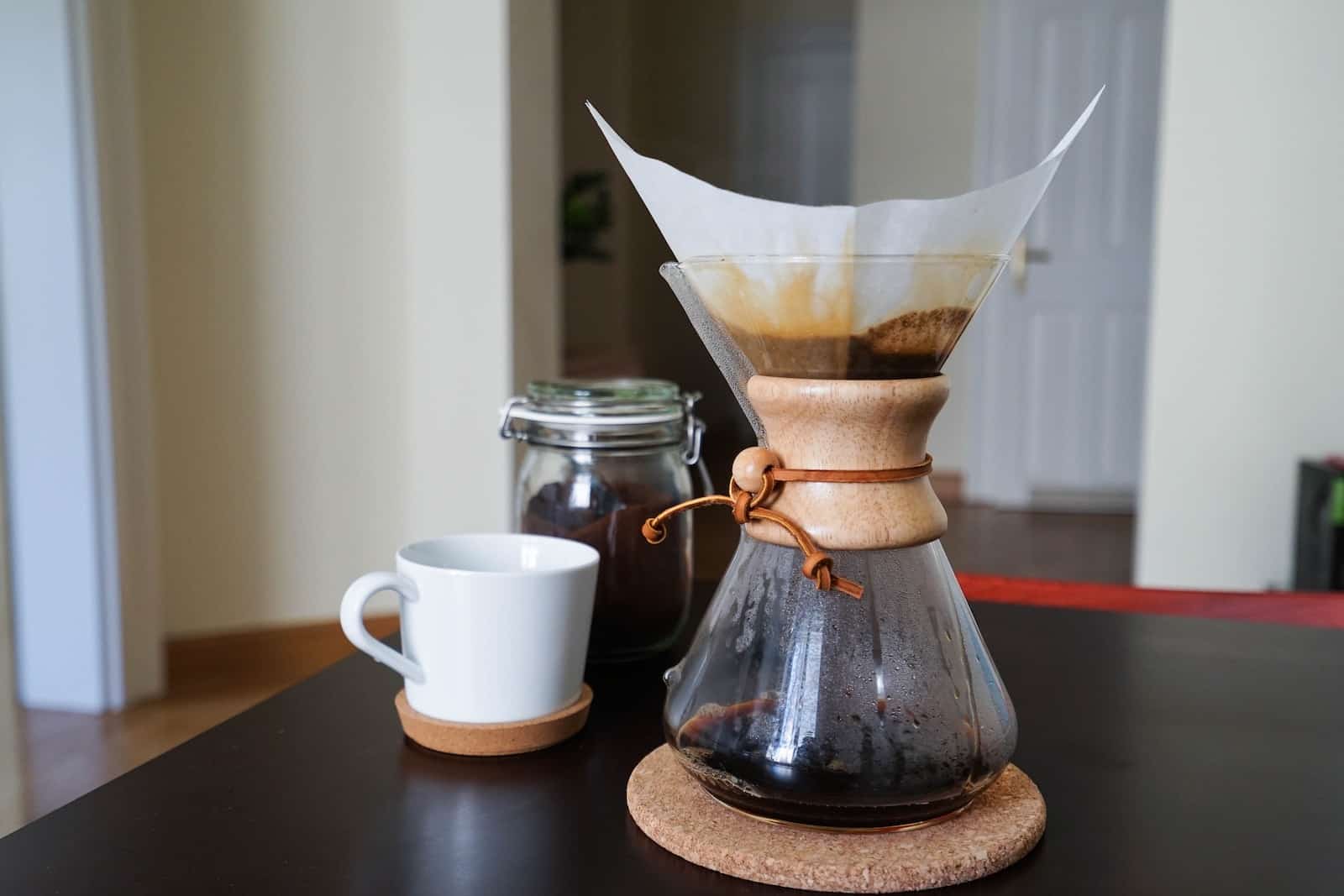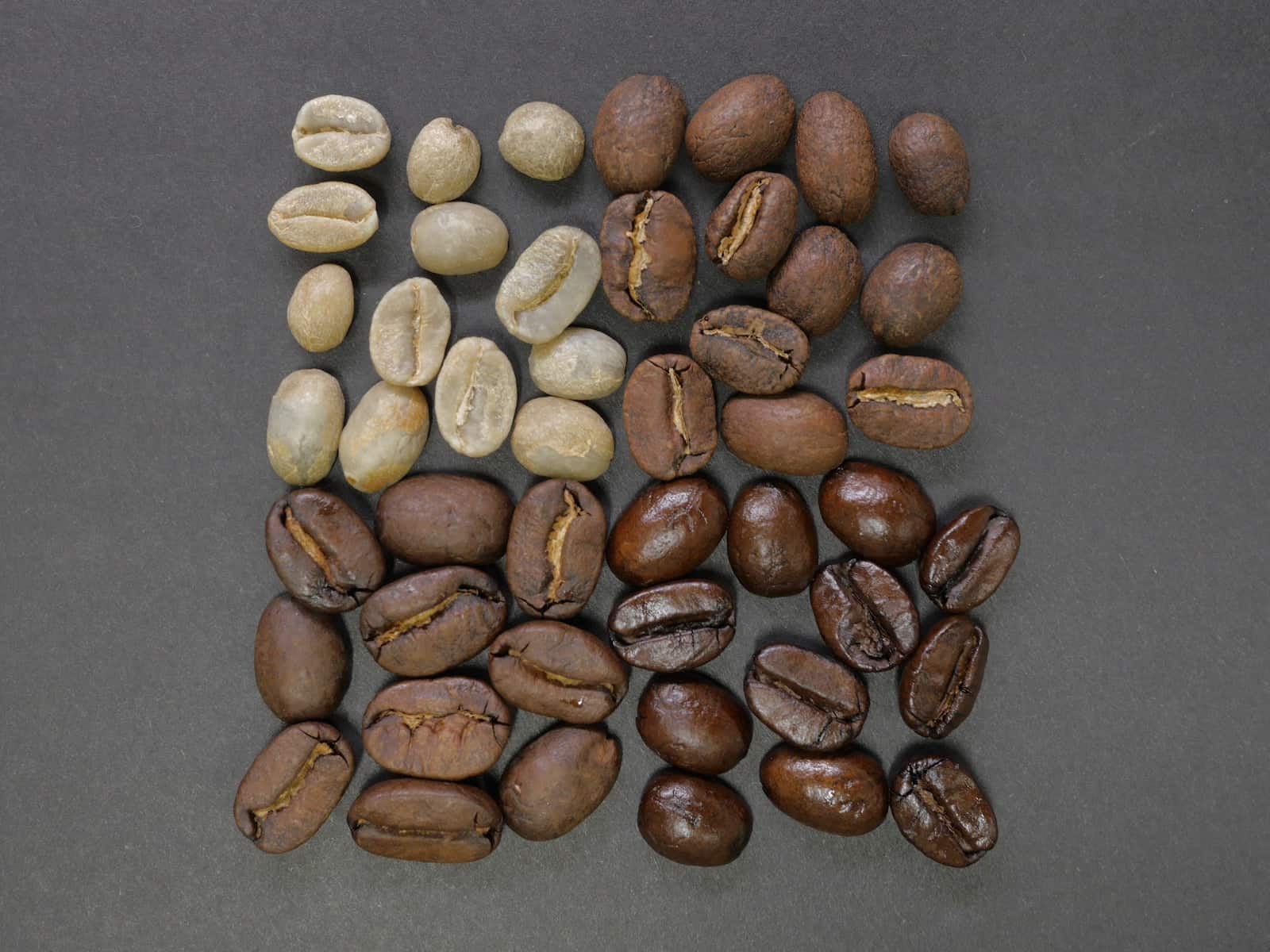The 5 World’s Strongest (Most Caffeinated) Coffee Brands
How many cups of coffee does it really take to get you wired?
There are two types of coffee drinkers in the world: The casual coffee drinker and the one-cup-away-from-an-IV coffee aficionado. And until recently, if you were the ladder, you had to resign to drinking higher quantities of coffee to get your caffeine fix.
Fortunately, a new trend is emerging in the coffee brewing business, and a handful of hardcore coffee brands are competing to create the “world’s strongest coffee.”
So, if you find yourself constantly reaching for a fifth or sixth cup to maintain your buzz, it might be time to switch to one of these insanely caffeinated coffee blends.
Product
Features
Price
Death Wish Coffee
- Caffeine Content: 728 mg per 12 fl oz
- Origin: Arabica and Robusta beans sourced from India and Peru
- Roast: Deathly dark
Valhalla Java
- Caffeine Content: Undisclosed
- Origin: Robusta and Arabica beans sourced from Indonesia, Honduras, Guatemala, and Sumatra
- Roast: Medium-dark
Banned Coffee
- Caffeine Content: 474 mg per 12 fl. oz.
- Origin: Robusta and Arabica beans
- Roast: Medium-dark
Strongest Coffee Brands
Death Wish Coffee

- Caffeine Content: 728 mg per 12 fl oz
- Origin: Arabica and Robusta beans sourced from India and Peru
- Roast: Deathly dark
Death Wish delivers a coffee so strong, its name moonlights as a warning label.
Death Wish Coffee is considered the patriarch of ridiculously robust coffee. In fact, the brand revolutionized the coffee brewing business by introducing a coffee bean that doubles the caffeine capacity of an average cup of joe.
But if you ask them, their beans have more to offer than a killer pick-me-up. Categorized under the SCAA as a specialty roast, Death Wish is USDA Certified Organic and Fair Trade.
In other words, you won’t be consuming harmful additives or excess ingredients, just purely organic Indian and Peruvian beans.
Aside from its incredible caffeine content, Death Wish sets itself apart from other next-level caffeinated coffee blends by synthesizing arabica and robusta beans. Together, these high-quality coffee beans concoct an insanely rich, dark roast with notes of dark cherry, dark chocolate, and roasted almond.
If you’re new to Death Wish, don’t throw caution to the wind. The brand recommends you brew using 2.5 tablespoons of coffee to 6 ounces of water to get the most bang out of your beans without compromising quality.
With a “no-BS guarantee” pledging the strongest cup you’ve ever tried, you can rest assured knowing you won’t actually die if you keep an eye on your caffeine intake.
Biohazard Coffee

- Caffeine Content: 928 mg per 12 fl oz
- Origin: Pure Robusta
- Roast: Dark
Biohazard contends Death Wish Coffees’ claim to the “world’s strongest coffee,” by introducing what they consider the “strongest coffee on Earth.” And if you’re looking at purely caffeine content, it’s hard to argue that fact.
At 77.33 mg of caffeine per fluid ounce and 4 to 5 times the strength of a typical cup of coffee, it’s safe to say that this Brooklyn startup is crafting a bean that isn’t meant for the everyday coffee drinker.
In fact, the FDA considers 400 mg of caffeine to be the safe daily limit for the average coffee drinker, so we recommend you keep an eye on your caffeine consumption and cup size to prevent pesky side-effects.
Nevertheless, Biohazard is built around the organic Robusta bean, sold ground or whole, and marketed to borderline coffee-dependent, early risers that eat, sleep, dream and breathe coffee.
The brand stands behind an additive-free bean and recommends 2 tbsp to 6 oz of water ratio for optimal taste and performance.
Valhalla Java

- Caffeine Content: Undisclosed
- Origin: Robusta and Arabica beans sourced from Indonesia, Honduras, Guatemala, and Sumatra
- Roast: Medium-dark
Valhalla Java isn’t just Death Wish in disguise.
In fact, Death Wish coffee drinkers describe the traditional Death Wish blend as the cup that will unapologetically shock you to consciousness, while Valhalla will keep you on caffeine-cloud-nine all day long.
According to Death Wish Coffee, Valhalla Java still packs a serious punch, but it’s classified a medium-dark, three-roast blend, so it’s not as deep, dark, and dangerous as the original Death Wish blend.
Like Death Wish Coffee, Valhalla’s Organic and Fair Trade beans are sourced from Peru and India. However, the unique, slightly less dramatic notes found in a cup of Valhalla Java also come from arabica and robusta beans sourced from Indonesia, Honduras, Guatemala, and Sumatra.
The Valhalla blend, which brandishes slightly less caffeine content, was the brainchild of rock n’ roll legend Zakk Wylde, Ozzy Osbourne’s lead guitarist. So, whether you want to feel like a Rockstar or merely need a little more incentive to rock n’ roll out of bed for an early morning meeting, Valhalla has you covered.
Banned Coffee

- Caffeine Content: 474 mg per 12 fl. oz.
- Origin: Robusta and Arabica beans
- Roast: Medium-dark
Another brand staking a claim to the “world’s strongest coffee,” Banned Coffee, also opted to craft a blend that marries rich Arabica beans with robusta beans to deliver a flavorful cup of joe with over-the-top caffeine content.
Technically, Banned Coffee is considered a medium-dark roast and falls short of the title for world’s most robust blend by only averaging 474 mg per a 12 oz serving. Regardless, the caffeine content in a 12 oz serving still trumps the typical dark roast.
Banned uses what they consider the “most prestigious farms in the world,” and delivers a full-bodied, smooth, low acidity, natural boost with notes of both berries and chocolate.
Their freshly bagged blend is sold in k-cups, whole bean, ground, and even a pumpkin spice variant that is guaranteed to add extra pep to your pumpkin spice latte during the holidays.
Megaton Coffee

- Caffeine Content: Undisclosed
- Origin: Robusta and Arabica beans sourced from South America and Asia Pacific
- Roast: Dark
Unlike some of the other caffeinated coffee kings on this list, Megaton isn’t looking to top the charts of caffeine content. Instead, they focus their attention on building better roasting into the equation, literally.
Megaton’s mantra is simple: better beans + better roasting = better coffee. Emphasizing the importance of small-batch roasting, Megaton insists that their Louisville roastery is where all the magic really happens.
Roasting in small batches allows the company to not only control the quality of the blend but also ensures you receive a fresh bag of beans each and every time.
While Megaton can be enjoyed by any caffeine-addicted coffee-lover, they market their blend mostly to high-performance athletes looking for an additive-free, natural pre-workout option to maximize performance.
As an added bonus, this high-octane coffee can be ordered via a monthly subscription service, so you never have to wonder whether there’s a strong batch of beans waiting for you when you roll out of bed.
Is Caffeine Content the Only Thing to Consider?

During your search for the most caffeinated cup of coffee, you might be tempted to reach for the bag of beans that has the highest caffeine content. But before you do, there are a few more variables to consider.
It’s All About The Bean
Every good cup of coffee starts with the bean, and highly caffeinated coffee is no exception.
Two beans, in particular, dominate the coffee scene: The arabica bean and the robusta bean.
These two competing beans differ in just about every way imaginable: quality, texture, and taste. While arabica beans are often praised for their smooth, sweet, subtle coffee notes, while robusta beans have earned a more economical, rugged, and rough-around-the-edges reputation.
However, despite being considered the second-rate bean, robusta beans have earned their place in the coffee cultivation business by offering double the amount of caffeine as their arabica counterparts.
For that reason, high-quality robusta beans generally play a significant role in crafting robust (no pun intended) caffeine-packed dark roasts (like those mentioned above) and highly-revered Italian espresso.
To strike the perfect balance of taste, texture, and overall quality, coffee brands crafting “the strongest coffee in the world,” will formulate a mix of arabica and robusta beans. Too much robusta and the blend will taste bold and gritty, but potentially bitter or harsh. Not enough robusta, and the caffeine content and resulting effects, get cut in half.
Bean Altitude and Origin
You’ve probably never thought twice about the origin of your coffee beans, but there’s a reason coffee brands adorn their bags with topography facts. Strangely enough, the taste and texture of your coffee are significantly influenced by elevation and region.
In general, beans grown at higher elevations are considered more desirable because they offer more complex flavor profiles. Arabica beans, for example, are grown at higher elevations than robusta beans.
However, If you’re looking for coffee that will pack the most punch in terms of caffeine content, robusta beans, which are grown at lower elevations will generally offer a higher quantity of caffeine.
Brew Method Matters

Ever wonder why your self-made morning brew doesn’t deliver the same kick as the one made by the barista down the block? Well, even if you have the best beans in the neighborhood, how you choose to brew will impact the strength of your liquid pick-me-up.
It’s important to note, however, that you might be the kind of coffee-lover that just wants your cup of coffee to taste stronger, without actually increasing the amount of caffeine.
To craft a full-bodied, strong cup of coffee, try a few of these tips:
- Swap out your tired, old drip machine with a french press or pour over. Immersion and pour over brew methods can produce a more full-flavored, bold brew because you have more control over how your coffee is made and how long caffeine is extracted.
- Adjust your coffee to water ratio. The higher the ratio of coffee to water, the stronger the brew.
- Perfect the grind. Grind beans right before you brew and experiment with different grind sizes. Depending on the brew method, a finer grind will produce a higher the level of caffeine.
- Buy quality coffee beans with high-caffeine content (like those listed above)
While the actual brewing method (i.e., immersion vs. drip) may play a role in the amount of caffeine extracted from beans, the brewing techniques listed above have a more significant overall impact on how much caffeine you extract and subsequently consume.
Light vs. Dark Roast

We can’t talk high-caffeine coffee without addressing the great debate of contemporary coffee culture: which roast contains more caffeine?
Some coffee connoisseurs drink dark because they assume it has more caffeine than a light roast. Why? Because the bold, strong flavors found in a darker roast are often mistaken for an increase in caffeine content.
Case in point: Decaf coffee. A cup of coffee can taste like it’ll take you to the moon, even if it contains little to no caffeine at all.
Meanwhile, coffee drinkers on team light roast assume their favorite blend contains more caffeine because caffeine attributes are lost when beans are over-roasted (we’re looking at you, dark roasts).
Ironically, all roasts are created equal. That’s right, all roasts of the same type of bean generally contain the same amount of caffeine.
Where things start to get tricky, is when you look at caffeine content based on the weight. Size doesn’t matter, as long as the coffee is weighed.
However, because darkly roasted beans are typically larger, if you’re measuring by the spoonful (volume) rather than weight, you may inadvertently be lessening the caffeine content in your cup.
Conclusion
If the effects of caffeine in your favorite blend have become a distant memory, you don’t have to look far to find a company that specializes in keeping you awake for days.
Just keep in mind, most of these blends contain more caffeine than the recommended safe daily dose, 400 mg, and excessive caffeine consumption isn’t for everyone.
We don’t recommend that you dive head-first into the world of high-octane coffee unless you’re confident your body can cope.